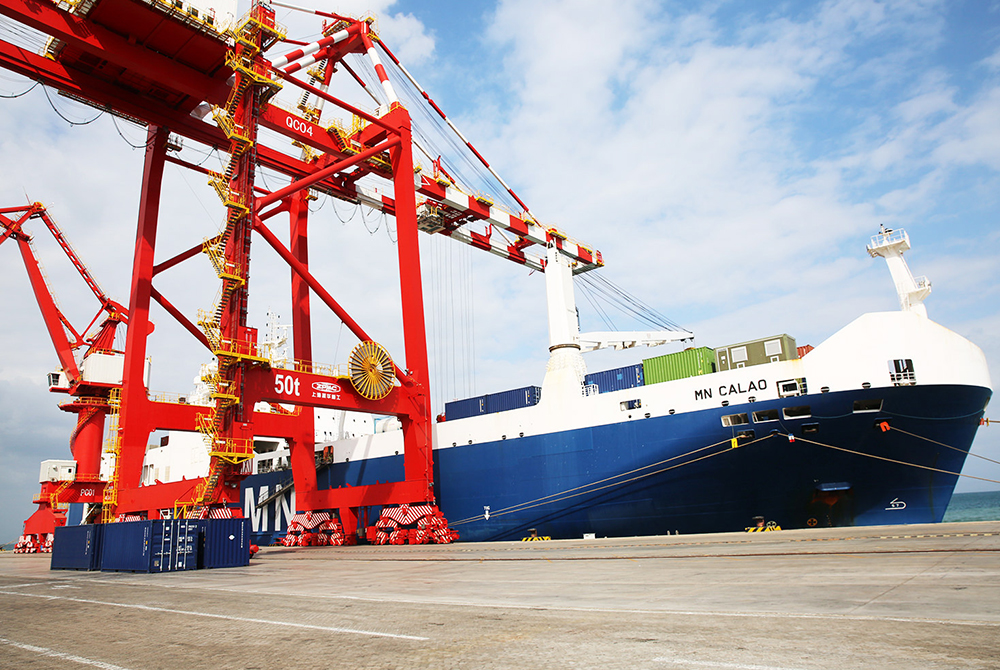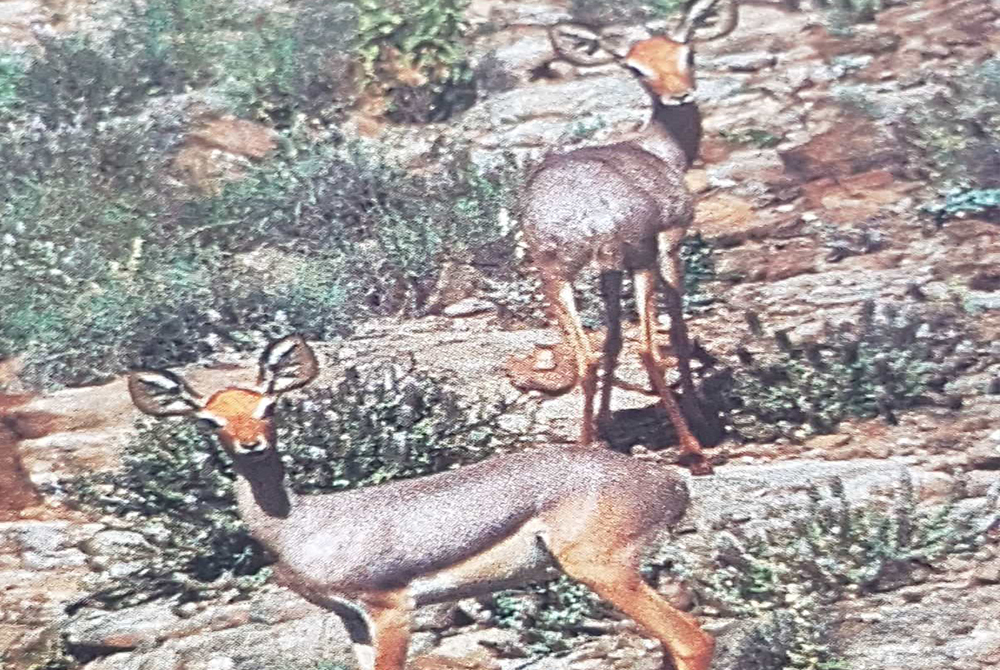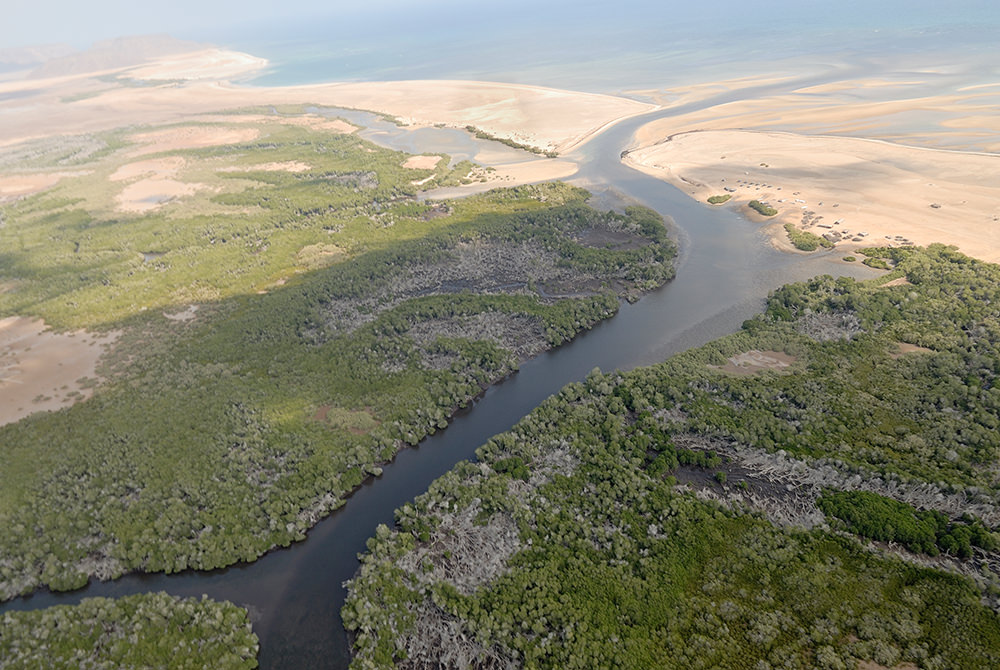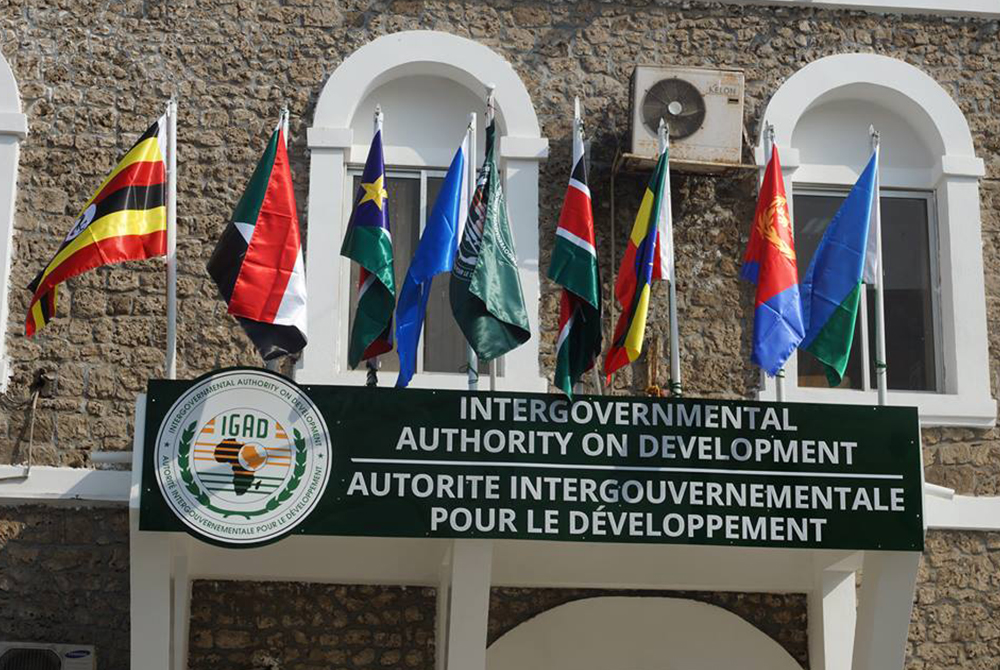The Republic of Djibouti covers an area 23,200 sq. km and is located in the Horn of Africa where it shares borders with Eritrea in the north, Ethiopian the west and Somalia in the south-east. Djibouti has 370 km coastline on the Red Sea and the Strait of Aden.


The population of Djibouti was estimated in 2015 at 965,598 inhabitants, two-thirds of whom live in Djibouti-ville, the country's capital.
The official languages of the country are French and Arabic. Somali and Afar are the national languages.
The population (100%) is of Muslim religion of Sunni sect. Young people under 20 represent nearly 60% of the country's population.
The Horn of Africa has always been a cultural and commercial hub between Africa, Asia and Arabia in particular. Contacts and interaction with the people of Arabia intensified in the seventh century with the spread of Islam in the region and the rise of Muslim kingdoms. The first and strong relations with Europeans date back to 1839. In 1862, the local chiefs of the country signed treaties with the French who founded Djibouti, the current capital of the Republic of Djibouti in 1888. The territory became a colony under the name of Côte Française des Somalis (The Somalis’ French Coast) then “Territoire des Afars et des Issas” (the Afar and Issa Territory) in 1967. After three decades of protests and contesting spurred by LPAI (ligue populaire pour l’independence: Popular Party for Independence) the colonial power organized a referendum on May 8, 1977, in which the majority of the population voted for independence.

The country acceded to independence on 27 June 1977 under the name, Republic of Djibouti and Hassan Gouled Aptidon was designated first President of the country. A one party-regime RPP (Rassemblement Populaire Pour le Progrès: People’s Progress Rally) presided over the country’s affairs.
An armed rebellion broke out in 1991 in the north region of the country and a new constitution introducing multiparty political system in the Republic of Djibouti was endorsed in 1992. A peace agreement was concluded in December 1994 between the Government and FRUD known as the “Front for the Restoration of Unity and Democracy”.
In May 1999, Presidential elections were held, after which a new President of the Republic, His Excellency Mr. Ismail Omar Guelleh, was elected.
Following a year of negotiations, the government and the armed FRUD faction signed an agreement on May 12, 2001, which definitively sealed peace in the Republic of Djibouti.

The politics of Djibouti takes place within a framework of a presidential and pluralistic republic. The President of the Republic is the head of State and also the head of the government, he is elected through direct universal suffrage for a 5 years term renewable. He appoints the different ministers after the Prime Minister’s proposal and has the power to dismiss them. Ministers are responsible for the implementation of the government policy. Legislative power is vested in the national assembly which comprises 65 members elected through universal suffrage on a list for a 5-year term. The President and the National Assembly are reciprocally independent. The President does not have the power to dissolve the National Assembly and reciprocally the latter cannot threaten the responsibility granted to the President. The other institutions created in the constitution are the Constitutional Council, the Magistrates Council, the High Court of Justice and the Republic Mediator.
The Djiboutian economy is highly dependent on the tertiary sector, which accounts for around 83% of the Gross Domestic Product “GDP” that has also developed around the ports as well as the Djibouti-Ethiopian Railway, banking, insurance and commerce.
The primary and secondary sectors have recorded developing performances of 5% and 2% respectively in 2017. Although Livestock remains the predominant activity in the rural world, the harshness of the climate and the absence of permanent water resources hampers the development of this sector. However, fishing remains a growing sector. This trend continues to be accentuated thanks to the tremendous infrastructure that the State has made available to this sector, namely the fishing zone. Tourism is a sector that has a lot of potential yet to develop.

The Republic of Djibouti is divided into 6 administrative units referred to as districts. The new government policy on decentralization has created Regional Councils within the districts. The members of these councils are chosen from among the residents of the districts and enjoy considerable power in public management.

Two thirds of the population of the country congregates in the district of Djibouti. The city of Djibouti, main town of the region, accommodates the main economic and cultural activities of the country.
The Square of June 27, 1977 (ex. Ancient Menelik square) located in the city center and heavily shaded, distinguishes itself from other places in the capital by its Moorish inspired arcades, which are home to many souvenir shops (traditional daggers with chiseled guard, shells, handmade basket, multicolored beaded necklaces, traditional and classical African souvenirs etc.) and many sidewalk and terrace cafes.
From the Square of June 27, you can go to Mahamoud Harbi Square (formerly Rimbaud Square) through picturesque streets that intersect. Between stalls and food bazaars, a large number of stores (specializing in sound and photography), you can buy the latest gadgets at attractive prices. The Mahamoud Harbi Square is that type of market dominated by the minaret of the Grand Mosque. Very typical, teeming with people, it remains the bustling soul of the capital.
The capital has popular neighborhoods where crowds invade open-air restaurants at relatively affordable prices; Djibouti the Thirteen Avenue and Rue Mouche (Fly Avenue) are full of swarms of tailors and street vendors who are curious and always looking for a change of scenery.
An excursion to this southern region may take a day and a half.
About thirty kilometers from Djibouti, one reaches the Petit Bara, and especially the Grand Bara, a vast desert expanse of twenty-five kilometers long and more than ten wide, stretching as far as the eye can see. This is arid plain of white clay, desiccated and cracked provides perfect traffic movement.
Two features: The frequent mirages and the abundance of animal species (gazelles, antelopes, fennecs, hyenas, jackals and camels). Given an on-site center, lovers and enthusiasts of sand yachting can practice their favorite sports.

Beira
In a beautiful red mountain setting, this first southern district provides a pleasant climate thanks to its altitude (750 m).
After Ali-Sabieh, the road continues towards Assamo, engaging between two mountainous ranges whose highest points are, to the east the Dadin Mount (1070 m) and to the west Arrey Mount (1286 m). The region is partly composed of sedimentary rocks, limestones and especially sandstone. Nest of eagle perched atop a rocky peak, the post of Assamo is cut in the sky in an impressive setting.
About ten kilometers from the top of the tower of the border post of Guestir, the gaze at the same time arises on both Somalia and Ethiopia.

At 750 m above sea level, on a small mountain overlooking the Gulf of Tadjoura, there is the city known for its pleasant climate during summer time. Between mid-May and early September, many families from the capital visit the city to spend the weekends or the summer season. In winter, the temperature can go down to 10° c. Arta Bay is one of the few places in the world where whale shark concentrations regularly appear in nearshore waters. They are easily accessible to observers.
After crossing the Grand Bara in its length, thirty kilometers of asphalt paved road still separate motorists from Dikhil. As they are carried out very quickly, there appears this little coquettish town, located on a rocky promontory.
In place of its white houses and its main alley of oleanders that existed fifty years ago, today we only find a group of small nomadic huts. It was in 1928 that an administrative post was created in this area, around which a village was born. Do not miss visiting the Lake Abbé and its lunar landscapes. This unusual landscape is presented to the eyes of the traveler and offers a fantastic world with its hundreds of needle-shaped limestone chimneys, a few meters more than fifty meters high. Here and there you can come across hot water springs some of which bubble up, encouraging the development of pastures like none other in the Republic of Djibouti.


The town of Obock, former capital, preserves its former splendor being the residence of the first governor of the territory, as well as that of the famous adventurer and writer Henri de Monfreid which is worth the detour.
This small town has the most beautiful beaches in the country. For divers, Obock Falls and the Seven Brothers Islands are undoubtedly exceptional places on the world scale, without forgetting the mangrove forests in Godoria and Khor-Angar.
Thermal springs and sulphurous vapor emanations, known in the region for their therapeutic properties, are currently the subject of study by specialists wishing to rational use.
To the north-east of Obock is the mountain range of Mablas, a magnificent site where animal life is abundant: many cynocephals, ostriches, leopards and panthers among others.
The air is fresh and invigorating, and plant species are the same as the Day, thanks to the presence of a waterfall and several springs that flow at their feet. Mountaineers will find their happiness in Mablas which offer all the possibilities of climbing, for the beginner as well as for the confirmed mountaineers.
The district of Tadjourah is undoubtedly one of the most fascinating regions of the country. Composed of landscapes as unusual as contrasted, tourists can admire one of the saltiest lakes in the world: Lake Assal.
Lake Assal is indeed a natural curiosity of great beauty, in a setting of volcanoes and black lava, 153m below sea level, bordered by ice floes of salt and gypsum of dazzling scenery.
A visit to the forest of the Day is absolutely necessary. You will have to drive fifteen kilometers through the mountain range before reaching the forest located at 1500 meters altitude: giant juniper trees, acacia trees, wild olive trees, as well as jujube trees and other varieties of striped flora from the surface of the earth cover in an area of 3.2 Km² that has been preserved as a national park.
Tadjourah, the capital of the district nicknamed the white city or the city of seven mosques is one of the most awake and most mysterious cities of Djibouti.

Bankouale Palm

The Republic of Djibouti is a member of the African Union, the Arab League and IGAD headquartered in Djibouti. The country is also a member of the UN and most major international organizations (World Bank, IMF, ADB, ACP Group) and regional organizations (COMESA, INS-CED, PERSGA).